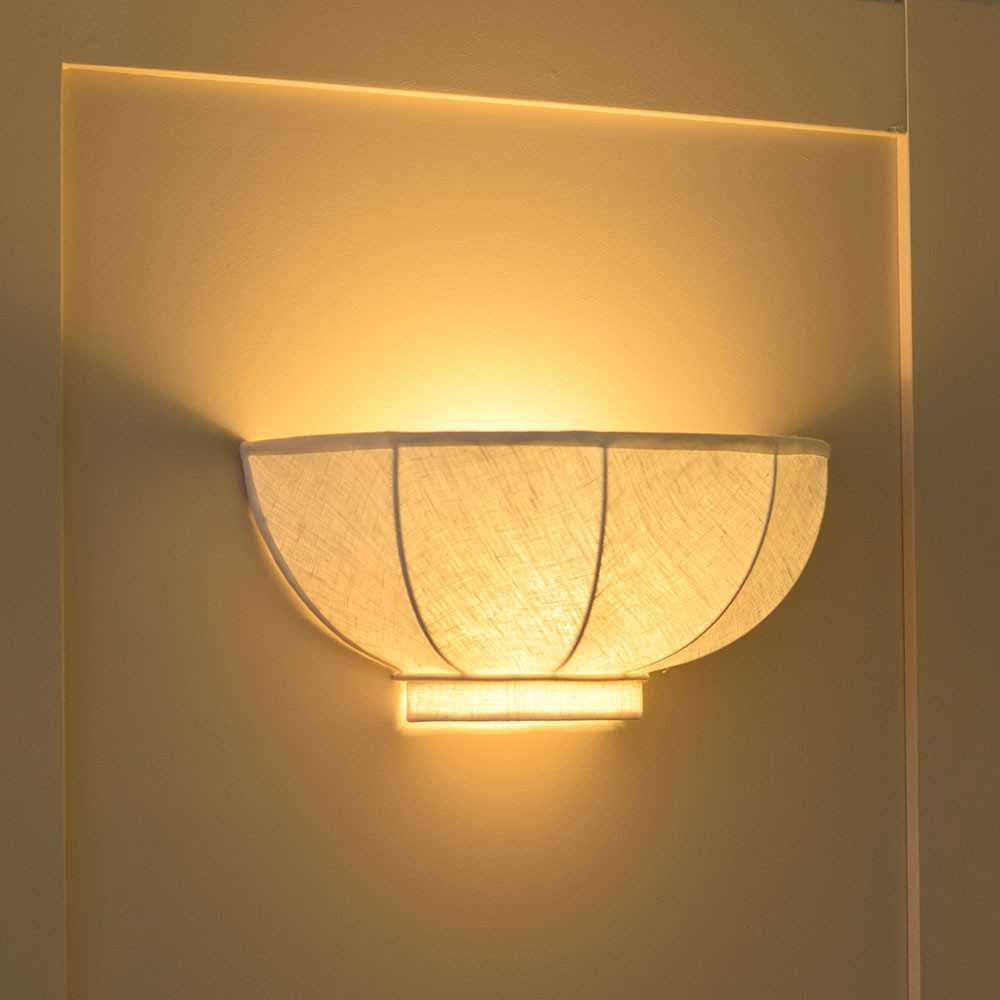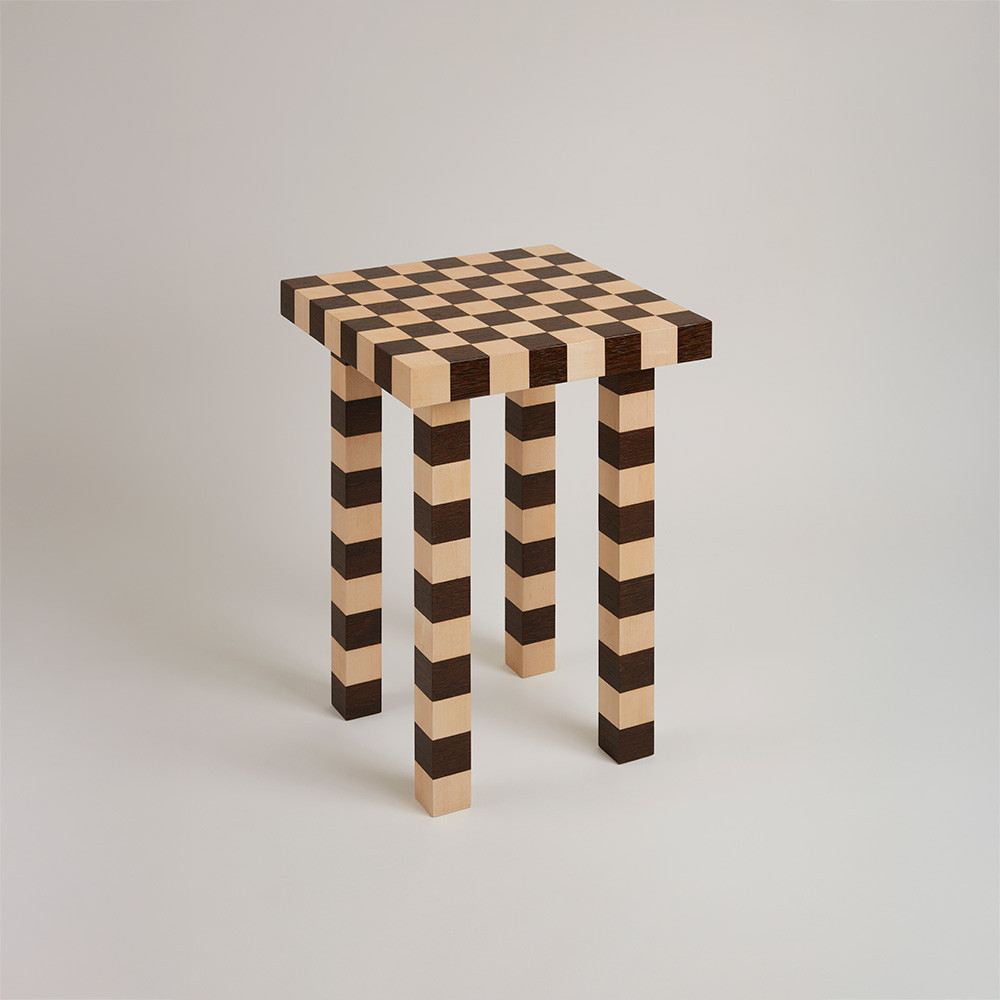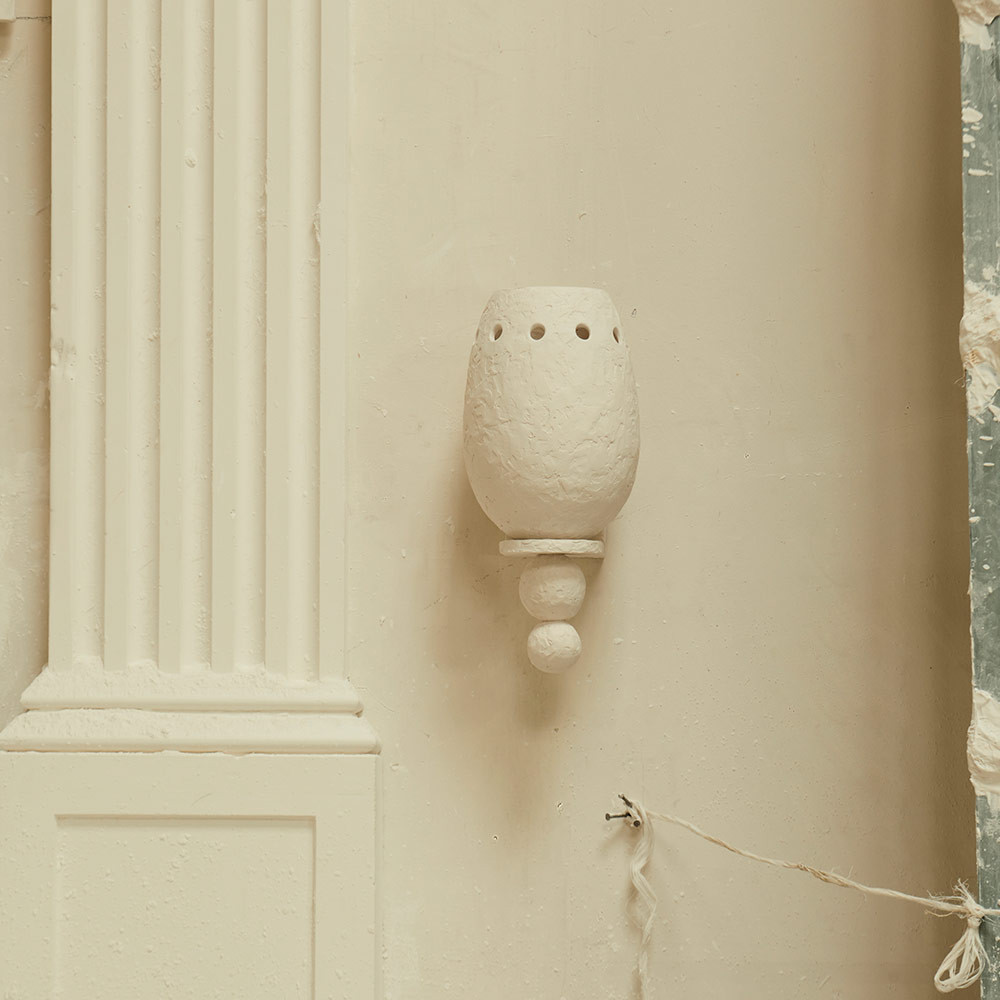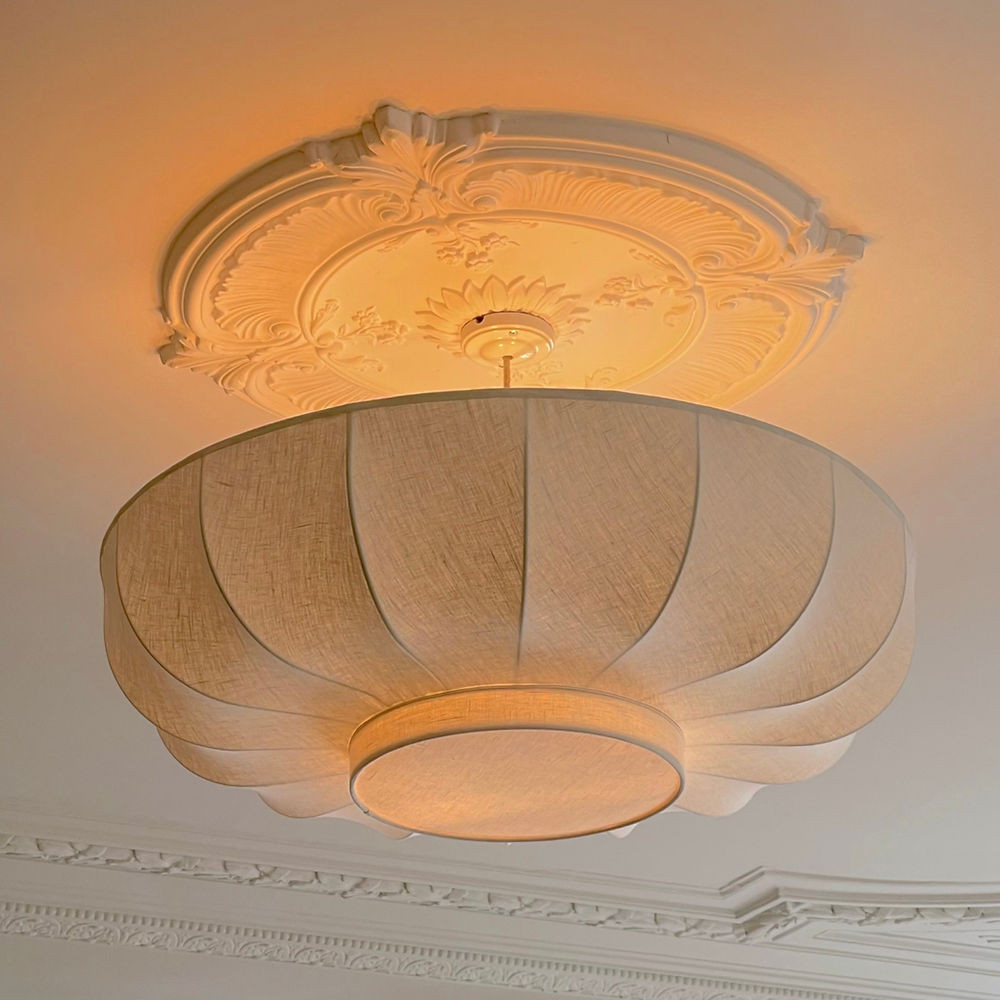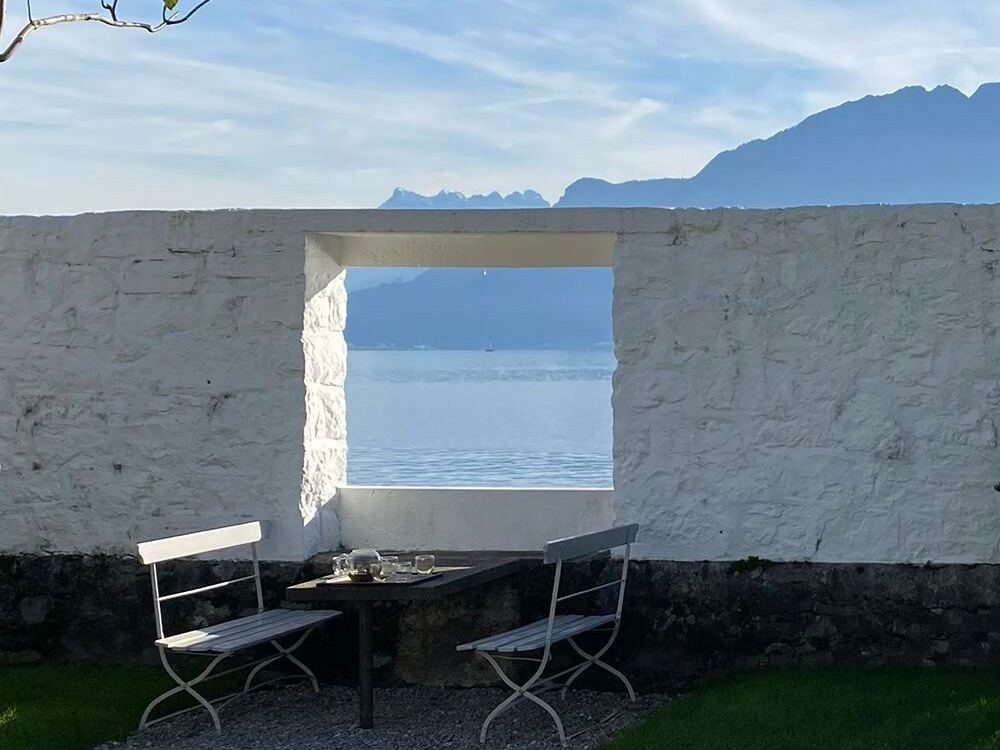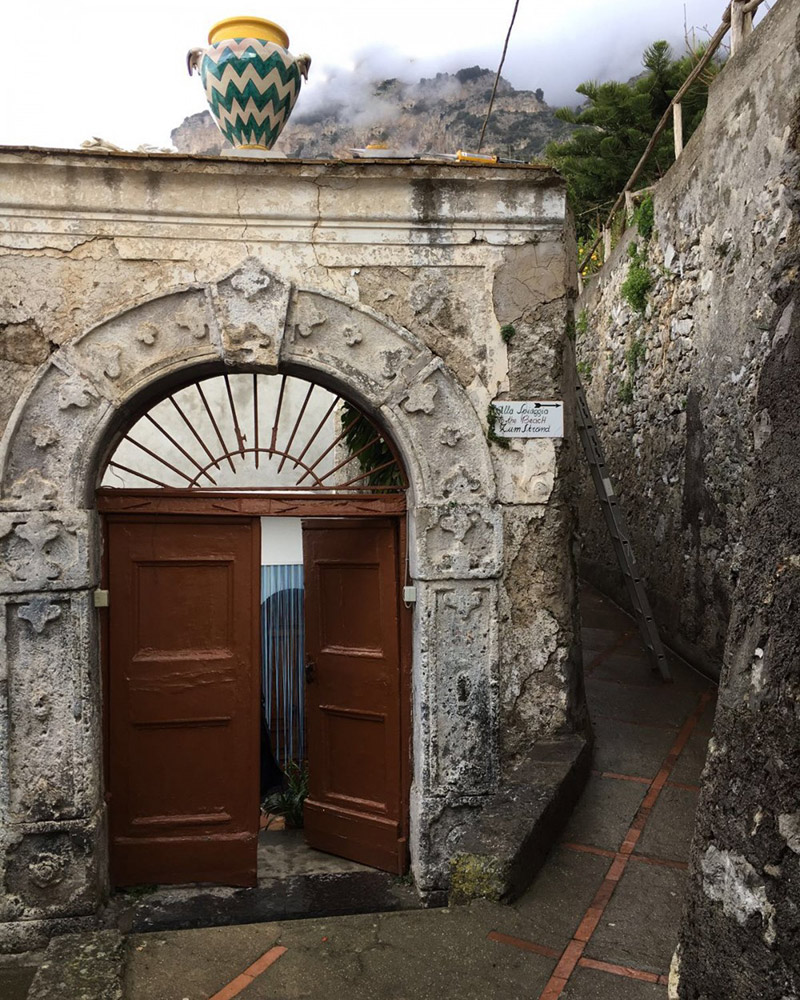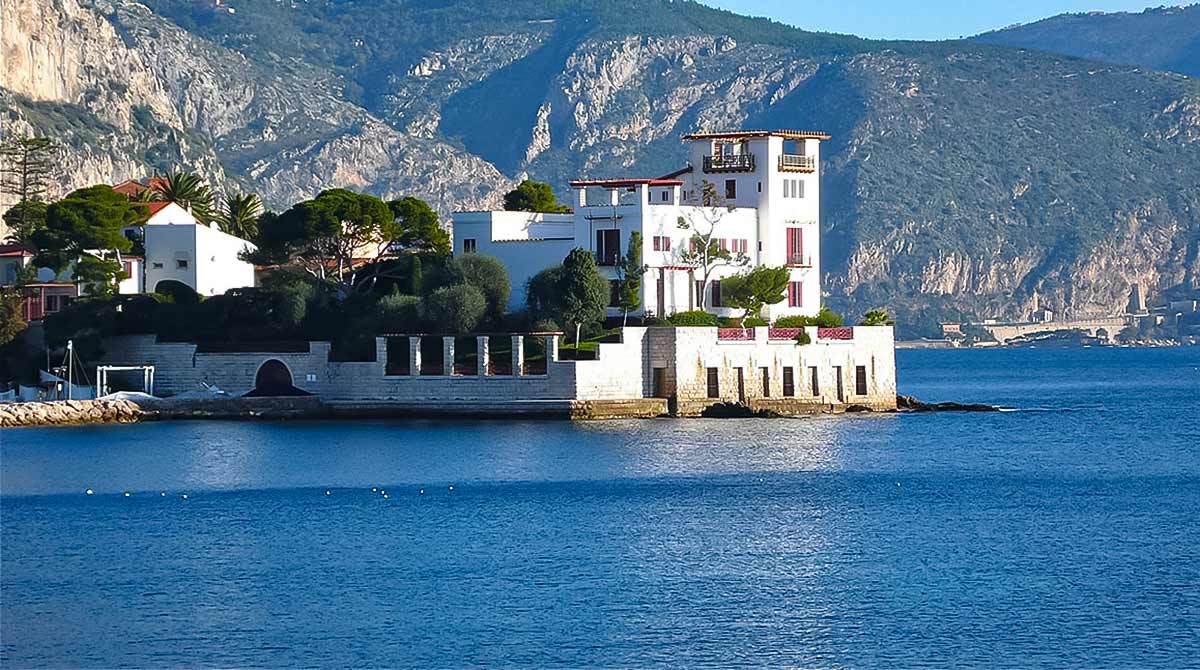
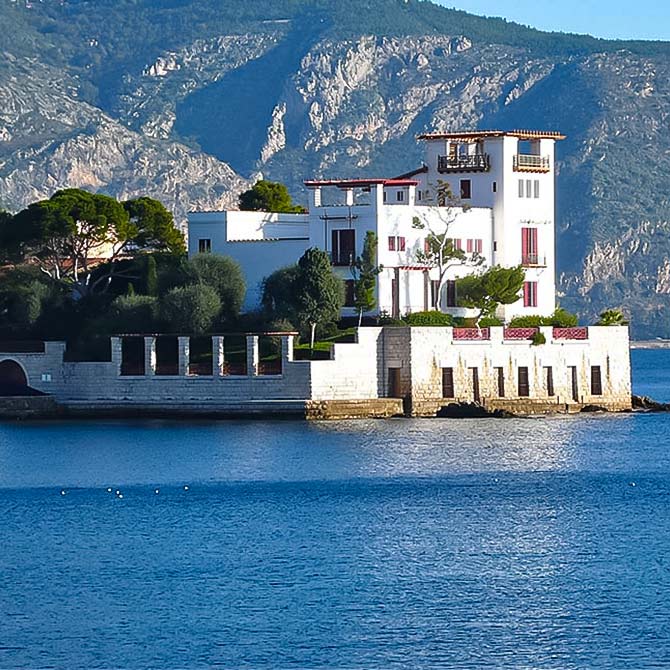
Villa Kérylos – A Living Tribute to Ancient Greece
Lawyer, archaeologist, numismatist, historian, member of Parliament, sociologist and mathematician, Théodore Reinach was fascinated by Ancient Greek civilization and was considered one of the leading Hellenists of his day.
He commissioned his home, Villa Kérylos, to be based on the model of noble houses from Ancient Greek times. Designed as a tribute to the civilisation which invented democracy, Villa Kerylos was also a total work of art : each piece of fabric, furniture and decoration was designed for the house.
MP for the Savoie region, Reinach was also a fervent defender of heritage: he brought forward the 1913 law for the protection of historical monuments and bequeathed the Villa Kérylos to the Institut de France.
His grandson, Fabrice Reinach, summarizes the essence of his legacy: “The Greek Spirit was, for him, both a dream and a reality, memory and present.”
Reinach chose to locate the house on a rocky promontory at the edge of Beaulieu-sur-Mer’s Baie des Fourmis, behind which rise the mountains of Eze, a site he compared to that of Ancient Greek temples.
It’s name, Kérylos, means “sea swallow”, a poetic bird of mythology, which announced a good omen.
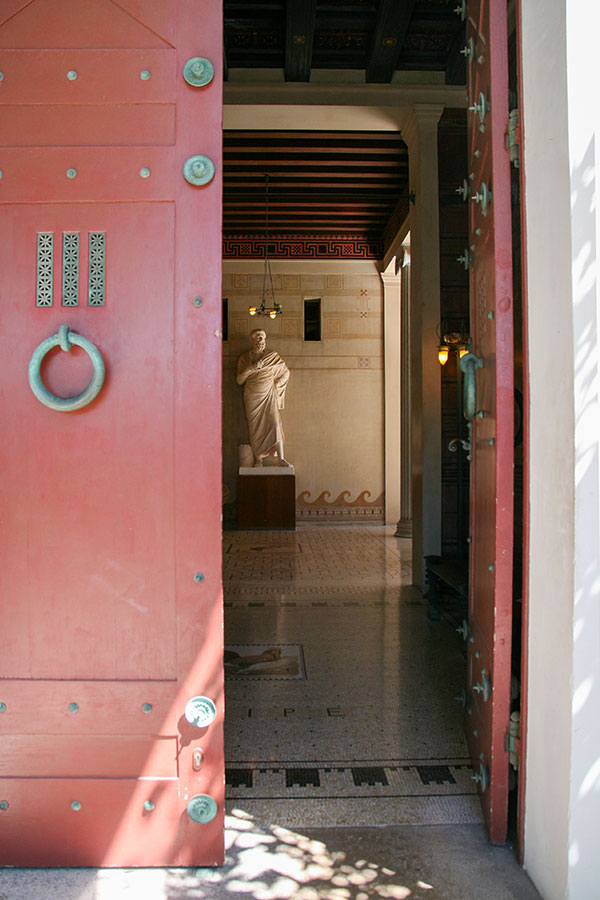
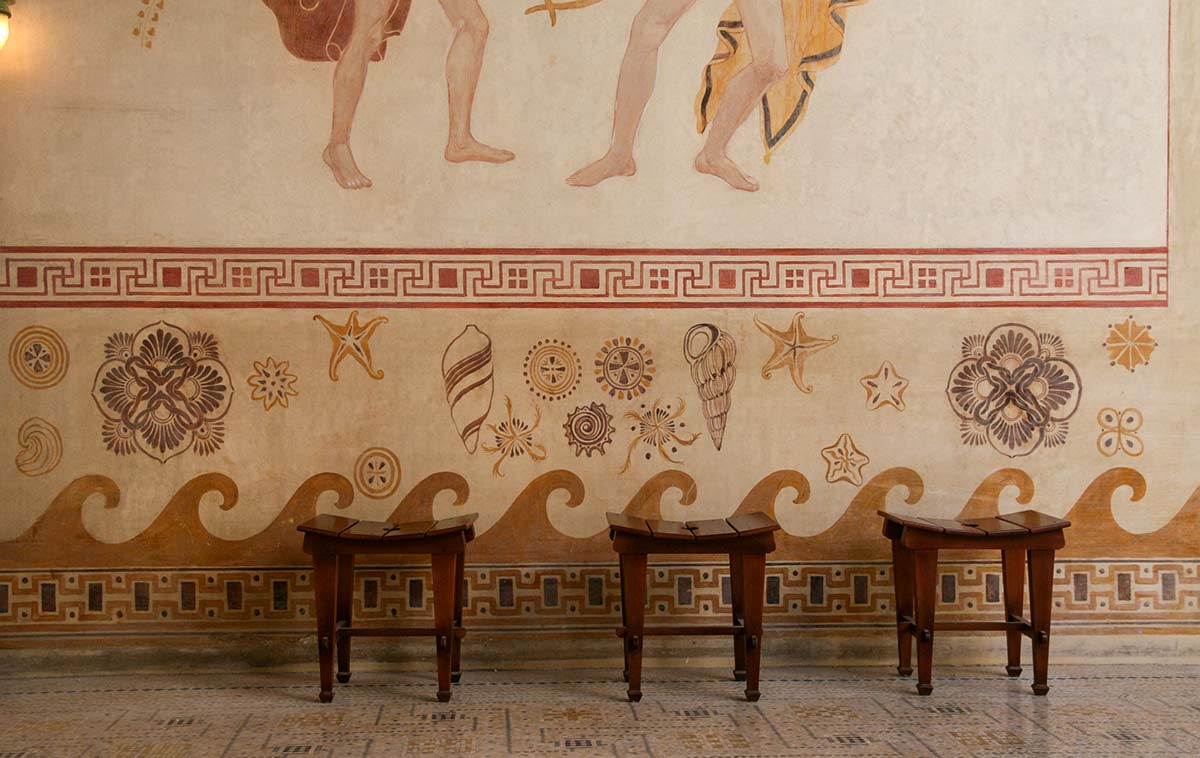
Théodore Reinach commissioned the young architect Emmanuel Pontremoli to undertake the design. For Pontremoli, it was a dream commission, with an unlimited budget – and his first ! Pontremoli was however a specialist in Ancient Greece – he had spent several years on archeological digs in Asia Minor and won the Grand Prix de Rome.
From floor to ceiling, every detail was conceived, designed, and meticulously crafted. From frescoes to furniture, ceramics to textiles, right down to door handles and light switches, each element was created within six years, between 1902 and 1908.
Villa Kérylos was never supposed to be a reproduction, but rather, a reinvention of ancient Greece.
“I know,” said Reinach, “that any restoration, reproduction, or reconstruction of a historical villa is meaningless.”
Villa Kérylos was a reinvention: a house where the quintessence of Greek civilisation is incorporated into the modernity of the early 20th century.
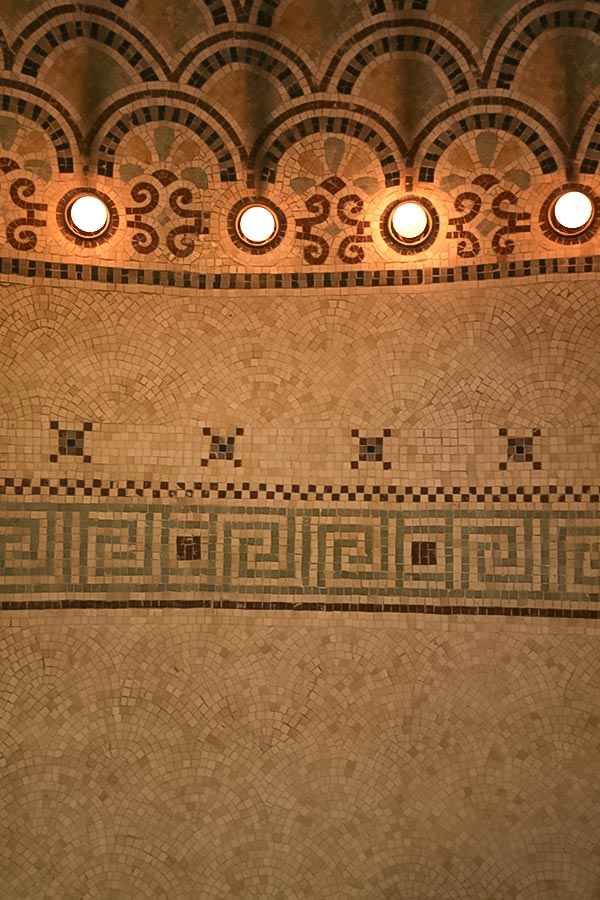
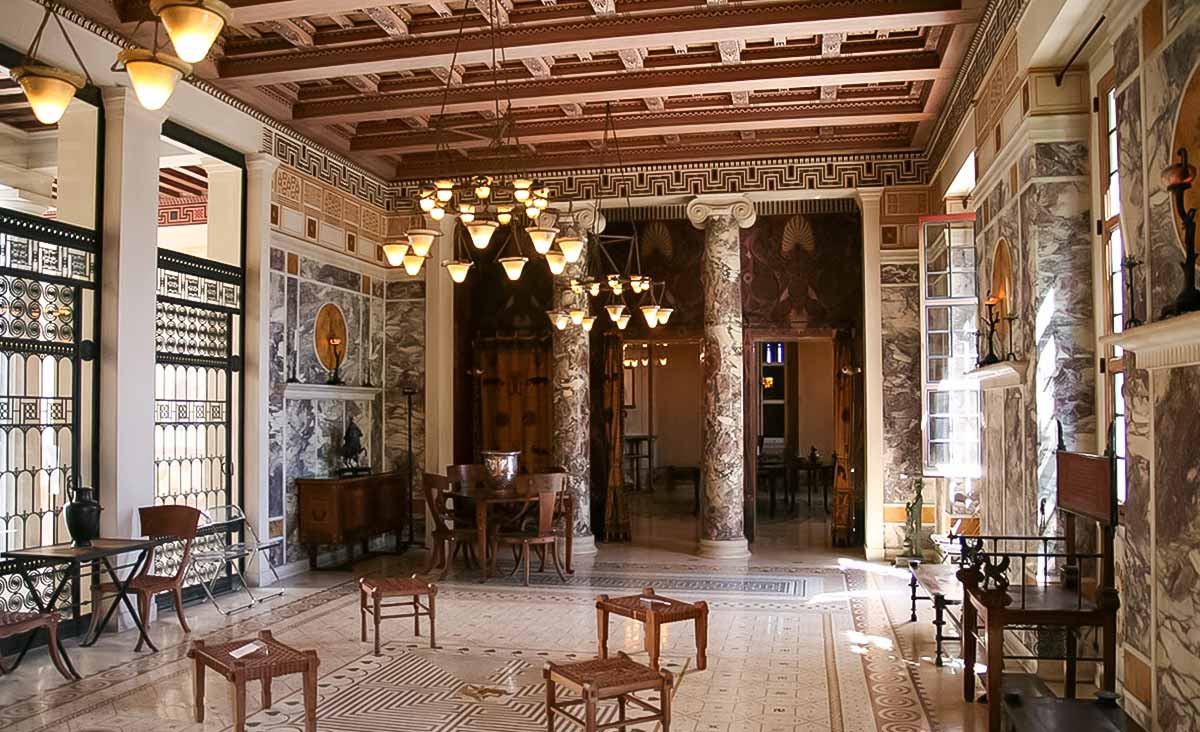
Its architecture is inspired by the aristocratic residences of Delos in the 2nd century BC, centered around a peristyle – a vast central courtyard surrounded by twelve monolithic columns made of white Carrara marble.
It is also enriched by influences from Rome, Egypt, and the Middle East, weaving a journey through the great Mediterranean civilizations.
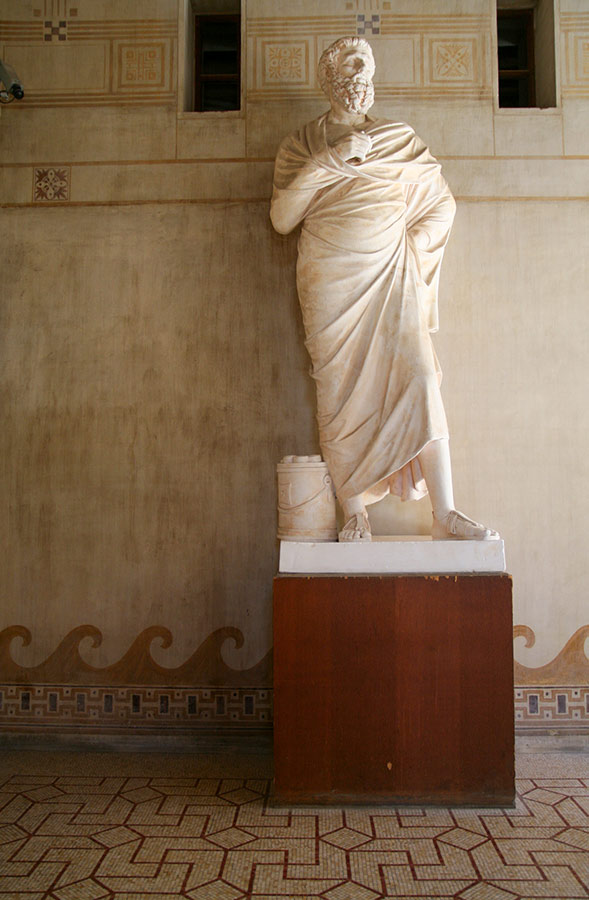
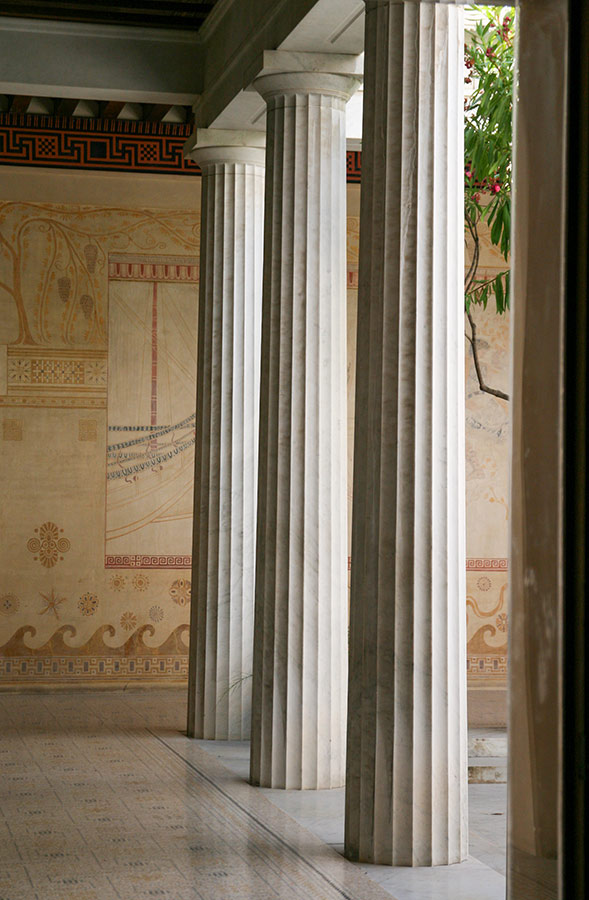
Each room of the villa is adorned with frescoes and mosaics inspired by ancient masterpieces. Themes and motifs were carefully chosen and reinterpreted, transitioning from one medium to another. For example, the frescoes of the peristyle are adaptations of designs originally painted on ancient vases.
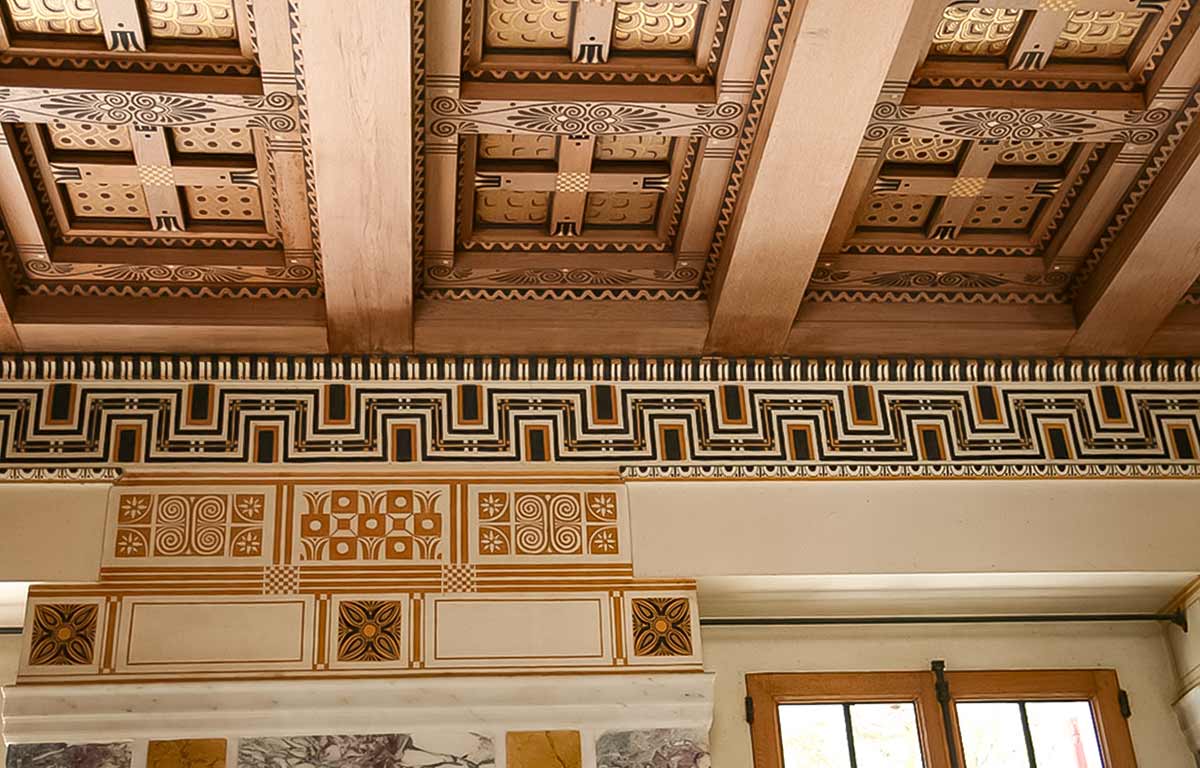
Pontremoli entrusted Venetian craftsmen with the creation of nearly 2,000 square meters of mosaic floors.
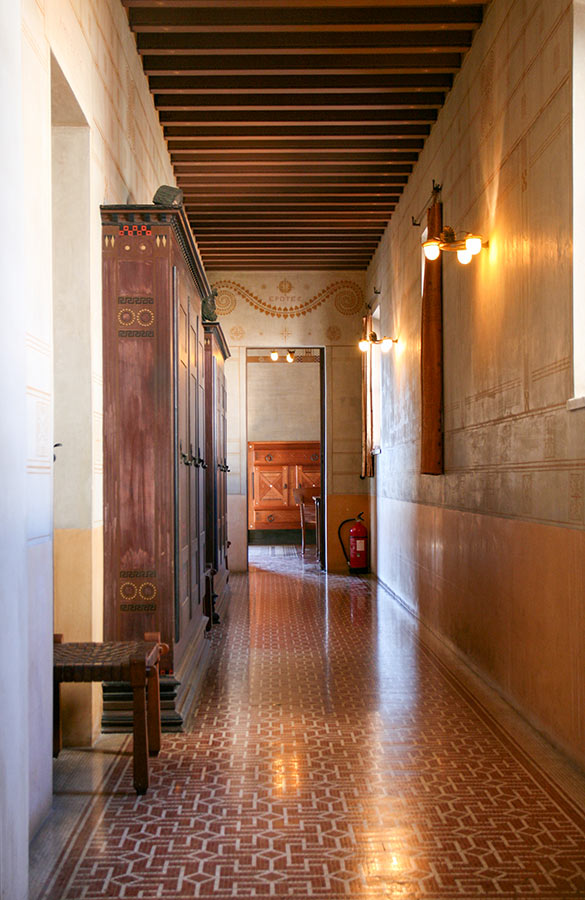
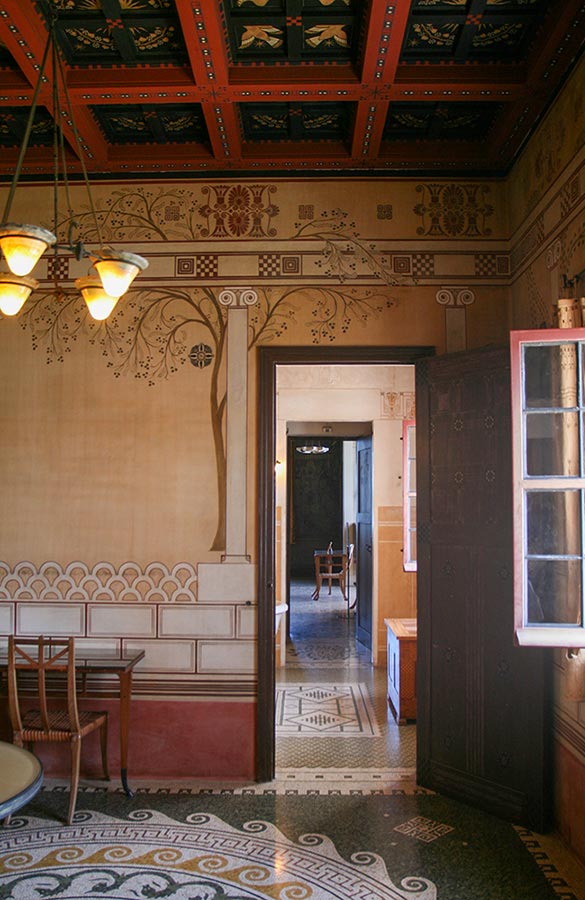
Emmanuel Pontremoli designed all of the pieces which furnish the rooms :
“Théodore Reinach,” writes Pontremoli in his memoirs, “was too occupied with his scientific endeavors and his role as a member of Parliament, so he left me complete freedom. I designed the furniture, silverware, and ceramics. I had the curtains and house linens embroidered. I designed each lamp.”
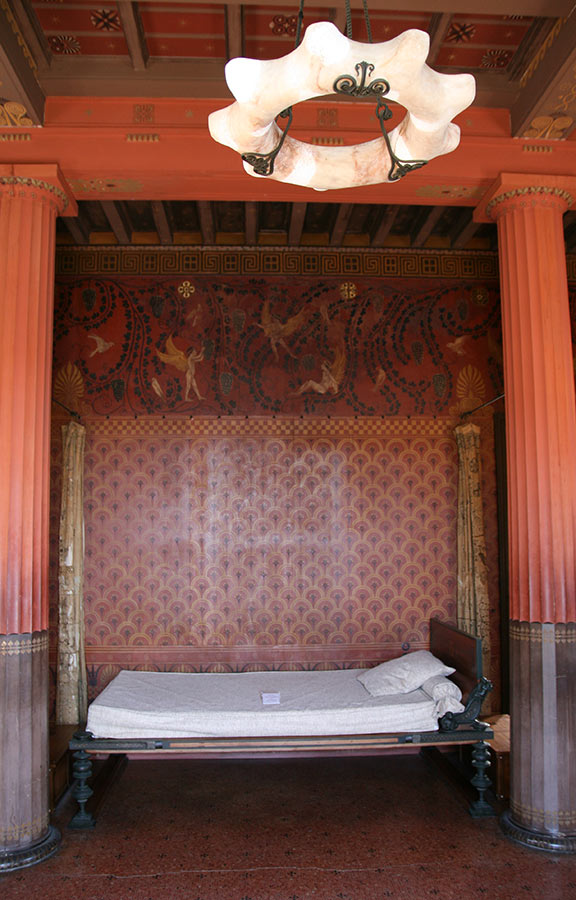
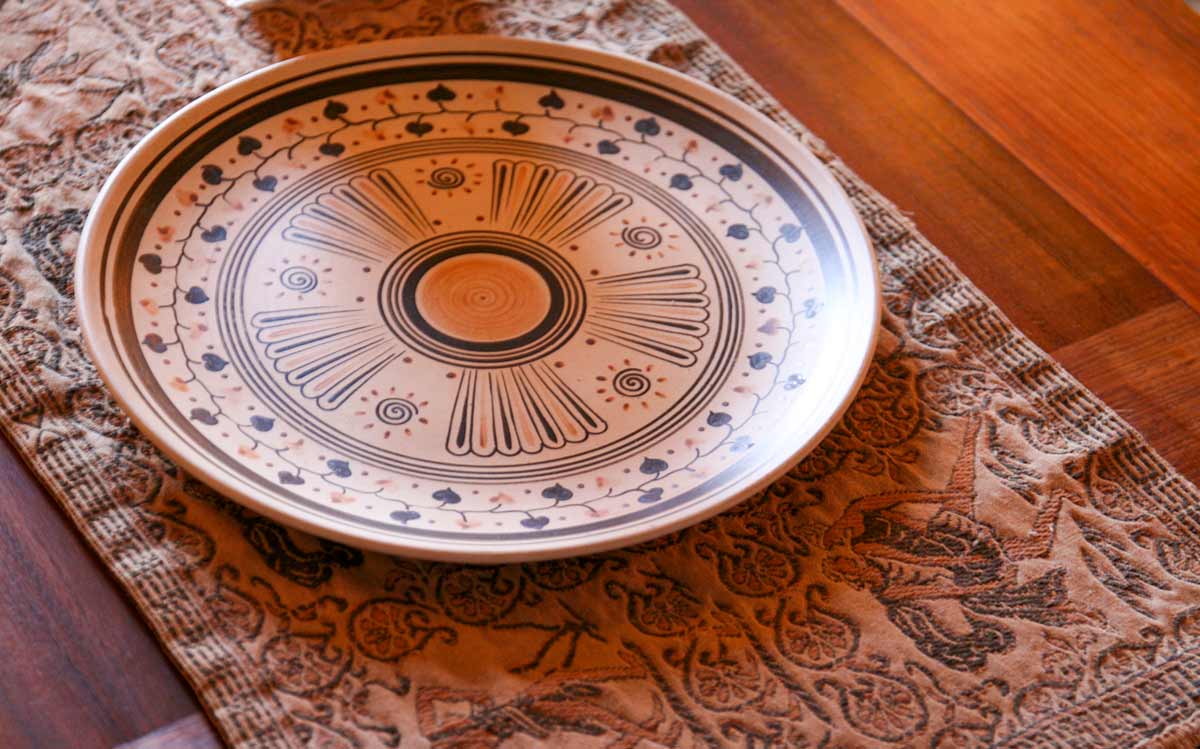
Marquetry by Bettenfeld, ceramics by Émile Lenoble, frescoes by Jaulmes and Karbowsky, intricate mosaics – each detail completes the illusion of a journey beyond time.
The motifs and forms were adapted and transformed with a freedom that already foreshadowed Art Deco.
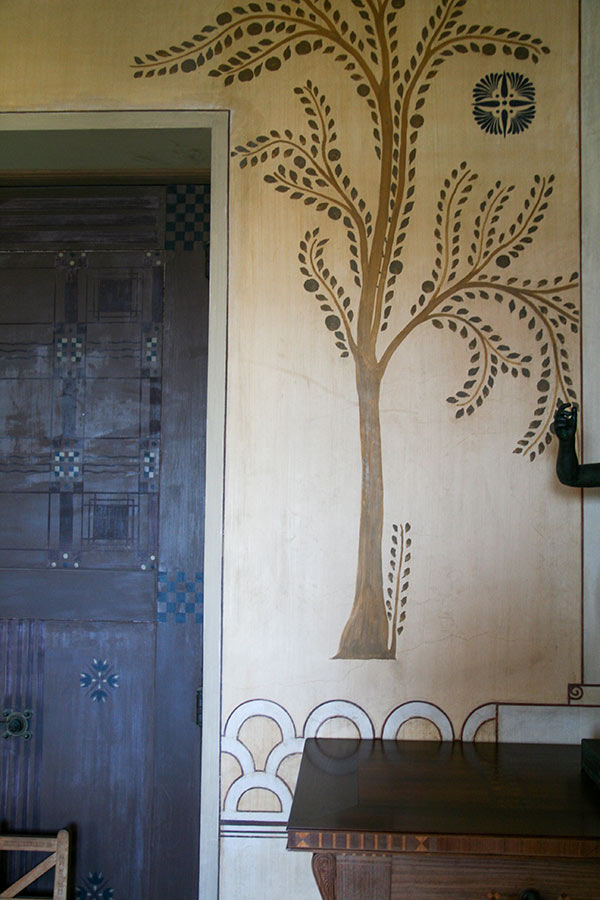
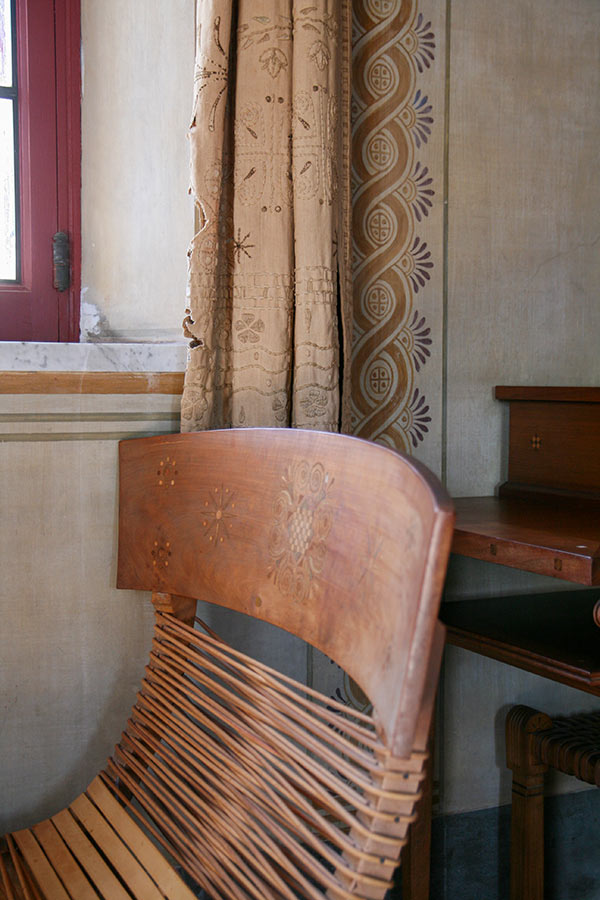
Villa Kérylos was also conceived to be a practical home, adapted to the needs of its owner.
Reinach’s library and studio occupied the largest room in the house.
The floor plan also includes spaces dedicated to family life, and a sublime reception area. Reinach occasionally hosted banquets where guests dined reclining, as in ancient times.
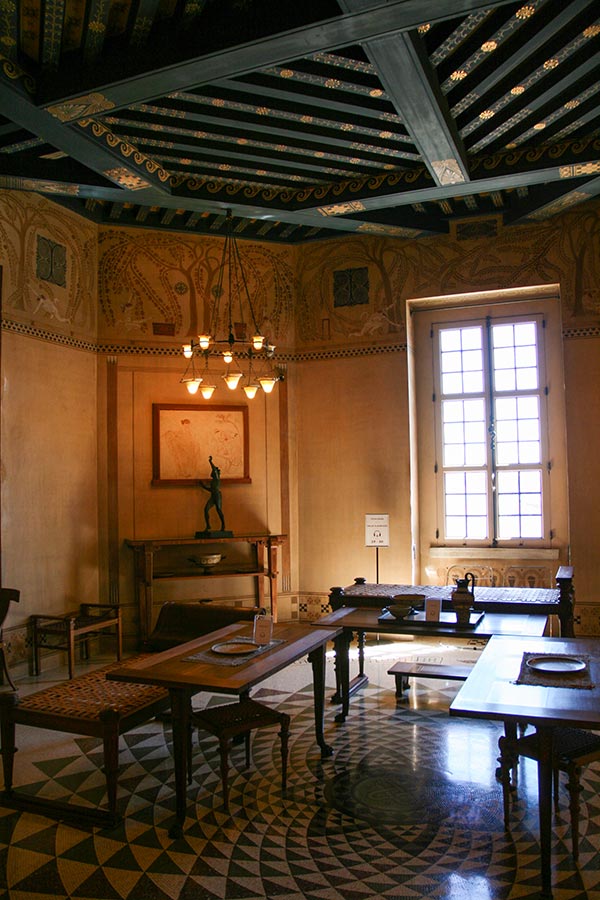
Upstairs are the sleeping quarters, rich with frescoes and hangings; the suites of Théodore Reinach and his wife, as well as several rooms for guests.
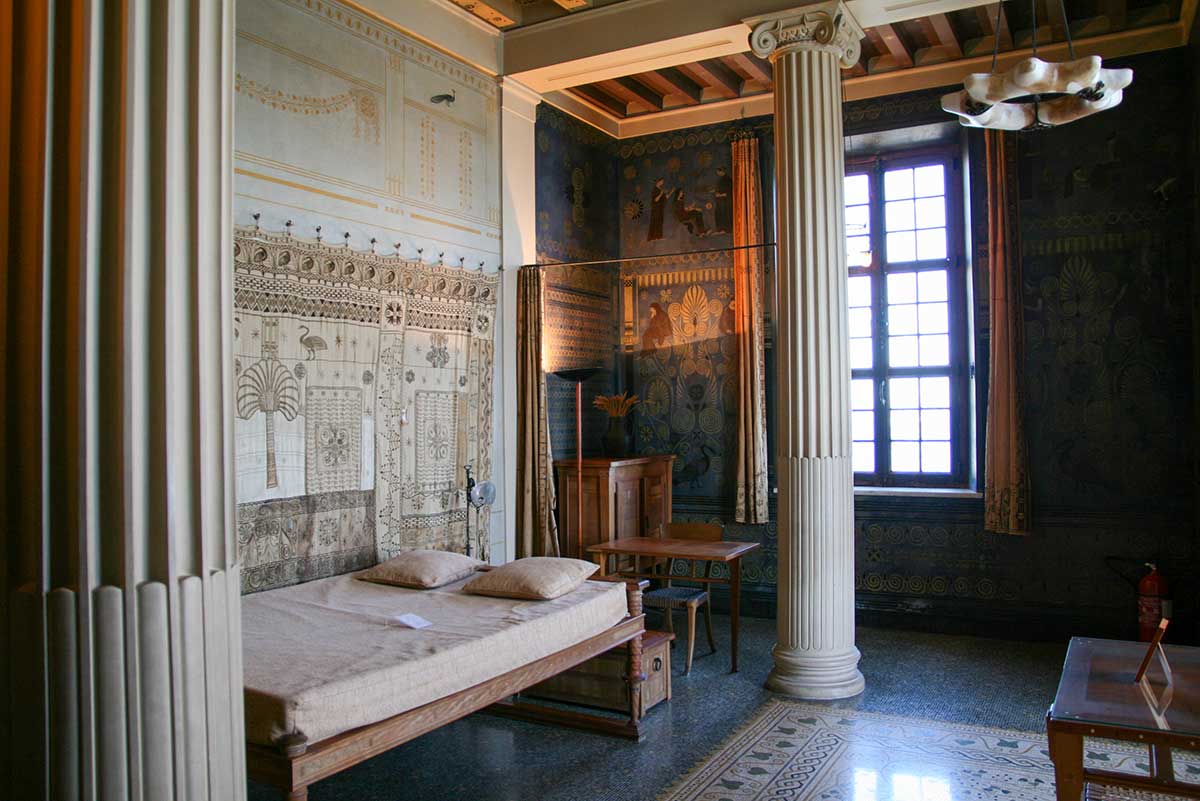
The villa boasts all the technological advances and comforts of its era: electric lighting, central heating, and bathrooms with hot water.
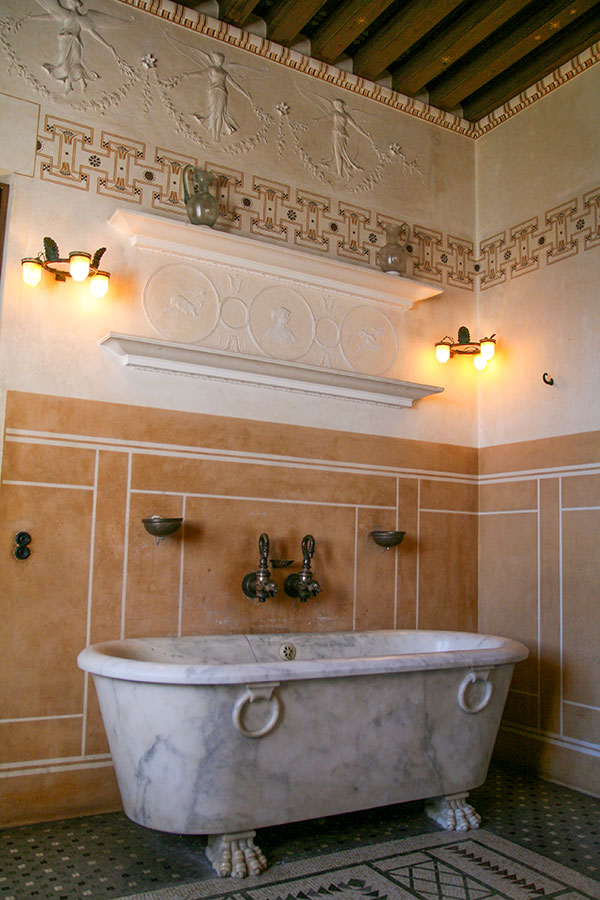
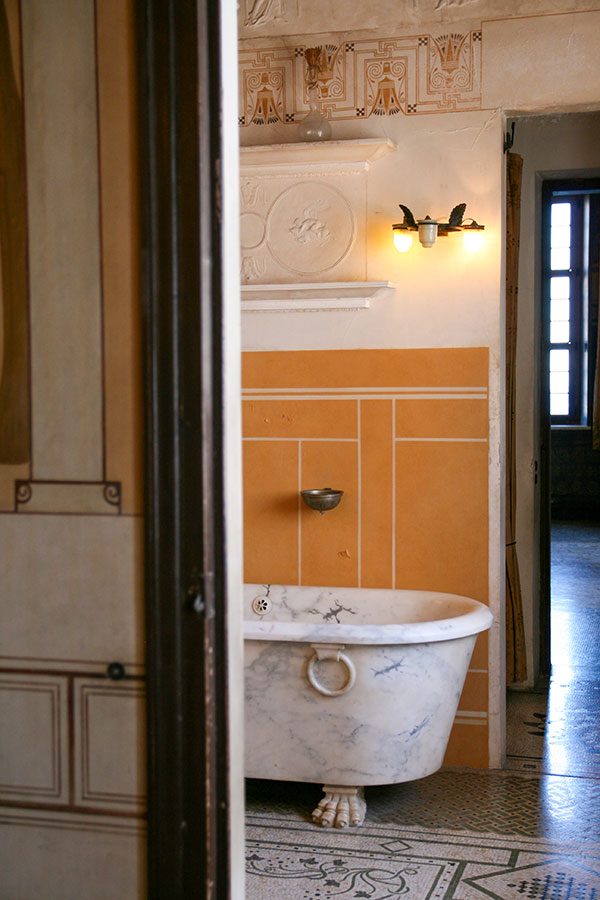
The outdoor spaces are equally impressive.
The garden, planted with olive trees, vines, pomegranates, myrtles, palm trees and papyrus offers an unparalleled view all the way to Italy.
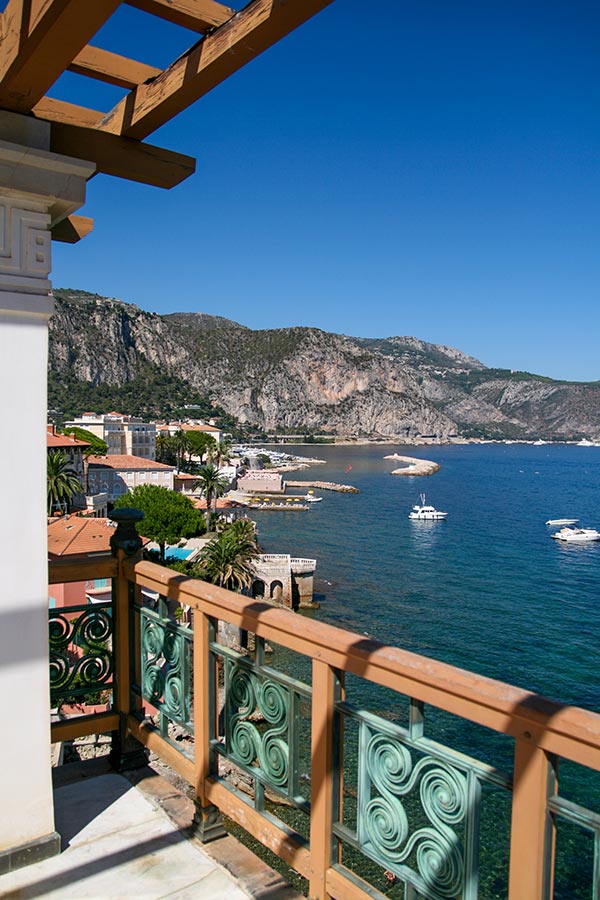
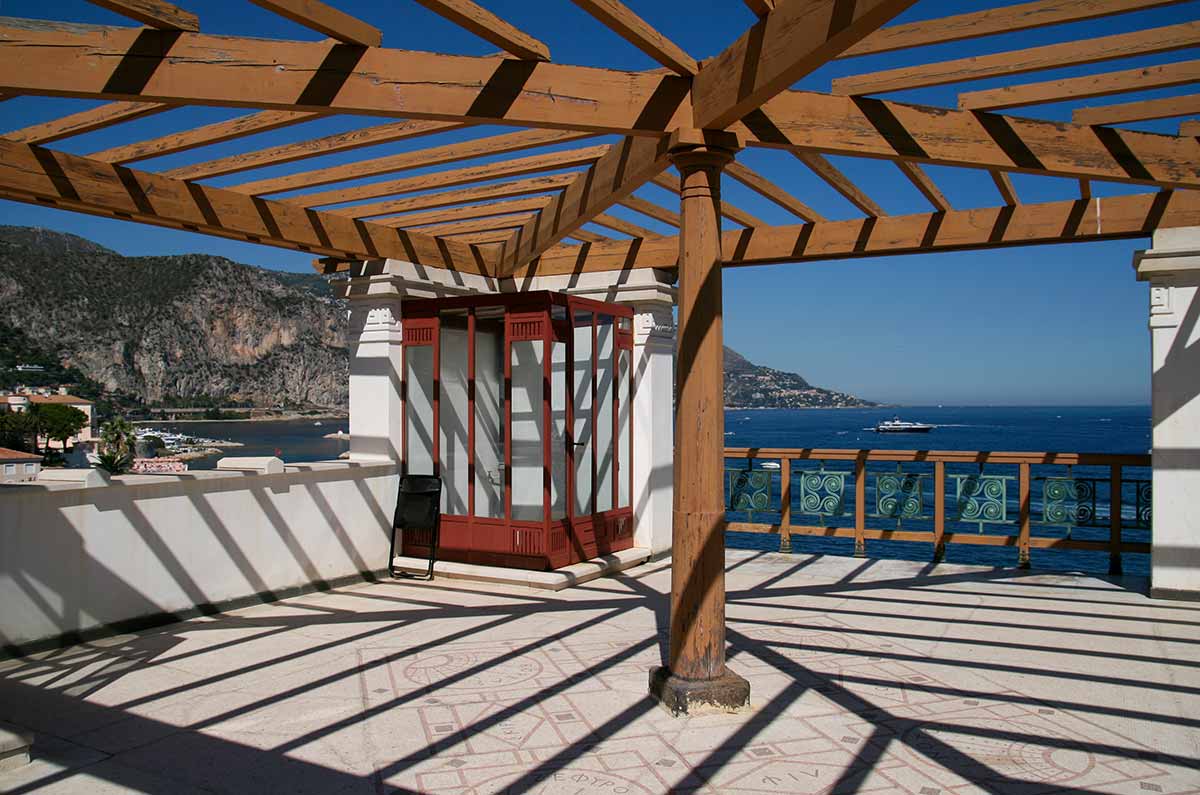
Now managed by the Centre des Monuments Nationaux, Villa Kérylos continues to awe its visitors. A place of transmission, it hosts exhibitions and cultural events, extending the spirit of sharing Reinach envisioned.
As he wrote in 1908: “Hasn’t it often been necessary, since the great Renaissance, to seek a new injection of Hellenic serum to save our culture from mannerism or barbarism?”
Shop the Look
Villa Kérylos,
A Living Tribute to Ancient Greece
Lawyer, archaeologist, numismatist, historian, member of Parliament, sociologist and mathematician, Théodore Reinach was fascinated by Ancient Greek civilization and was considered one of the leading Hellenists of his day.
He commissioned his home, Villa Kérylos, to be based on the model of noble houses from Ancient Greek times. Designed as a tribute to the civilisation which invented democracy, Villa Kerylos was also a total work of art : each piece of fabric, furniture and decoration was designed for the house.
MP for the Savoie region, Reinach was also a fervent defender of heritage: he brought forward the 1913 law for the protection of historical monuments and bequeathed the Villa Kérylos to the Institut de France. His grandson, Fabrice Reinach, summarizes the essence of his legacy: “The Greek Spirit was, for him, both a dream and a reality, memory and present.”
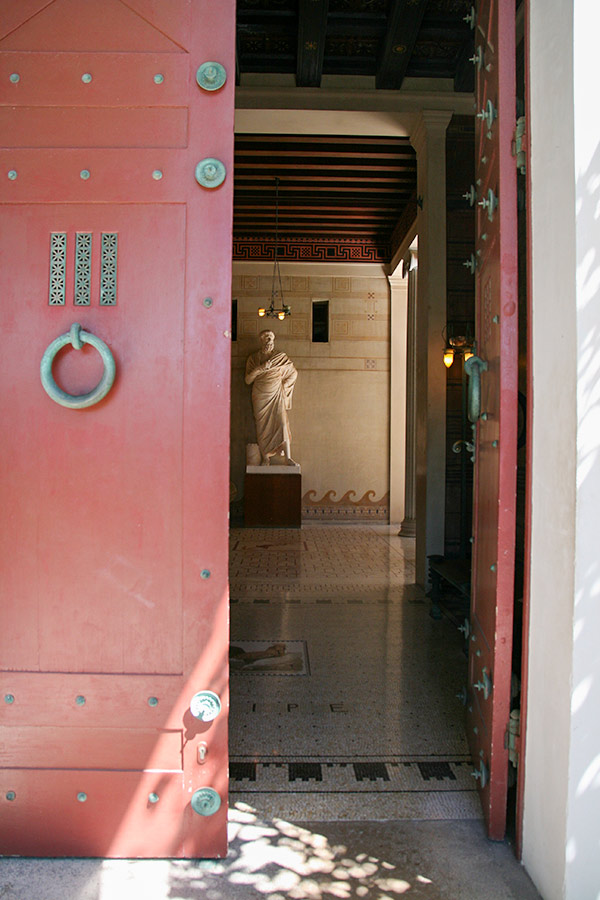
Reinach chose to locate the house on a rocky promontory at the edge of Beaulieu-sur-Mer’s Baie des Fourmis, behind which rise the mountains of Eze, a site he compared to that of Ancient Greek temples.
It’s name, Kérylos, means “sea swallow”, a poetic bird of mythology, which announced a good omen.
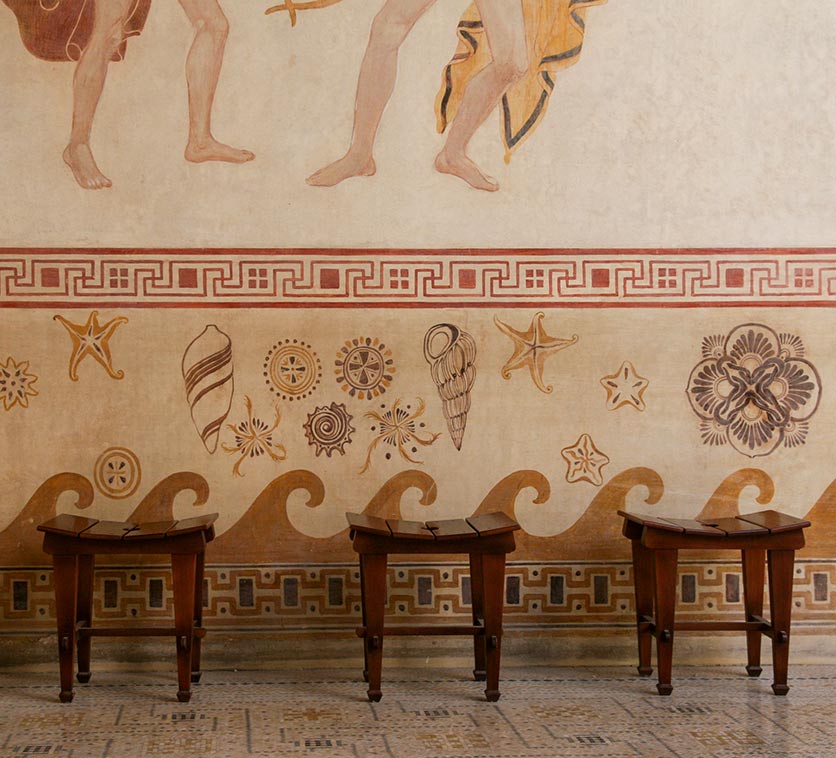
Théodore Reinach commissioned the young architect Emmanuel Pontremoli to undertake the design.
For Pontremoli, it was a dream commission, with an unlimited budget – and his first ! Pontremoli was however a specialist in Ancient Greece – he had spent several years on archeological digs in Asia Minor and won the Grand Prix de Rome.

From floor to ceiling, every detail was conceived, designed, and meticulously crafted. From frescoes to furniture, ceramics to textiles, right down to door handles and light switches, each element was created within six years, between 1902 and 1908.
Villa Kérylos was never supposed to be a reproduction, but rather, a reinvention of ancient Greece.
“I know,” said Reinach, “that any restoration, reproduction, or reconstruction of a historical villa is meaningless.”
Villa Kérylos was a reinvention: a house where the quintessence of Greek civilisation is incorporated into the modernity of the early 20th century.

Its architecture is inspired by the aristocratic residences of Delos in the 2nd century BC, centered around a peristyle – a vast central courtyard surrounded by twelve monolithic columns made of white Carrara marble.
It is also enriched by influences from Rome, Egypt, and the Middle East, weaving a journey through the great Mediterranean civilizations.


Each room of the villa is adorned with frescoes and mosaics inspired by ancient masterpieces. Themes and motifs were carefully chosen and reinterpreted, transitioning from one medium to another. For example, the frescoes of the peristyle are adaptations of designs originally painted on ancient vases.
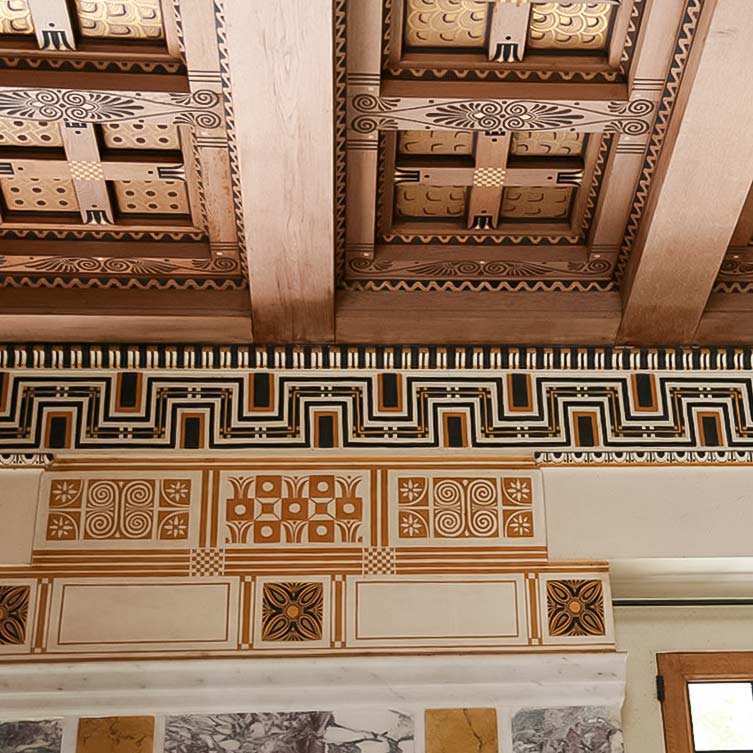
Emmanuel Pontremoli designed all of the pieces which furnish the rooms :
“Théodore Reinach,” writes Pontremoli in his memoirs, “was too occupied with his scientific endeavors and his role as a member of Parliament, so he left me complete freedom. I designed the furniture, silverware, and ceramics. I had the curtains and house linens embroidered. I designed each lamp.”
Pontremoli entrusted Venetian craftsmen with the creation of nearly 2,000 square meters of mosaic floors.

Marquetry by Bettenfeld, ceramics by Émile Lenoble, frescoes by Jaulmes and Karbowsky, intricate mosaics – each detail completes the illusion of a journey beyond time.
The motifs and forms were adapted and transformed with a freedom that already foreshadowed Art Deco.

Villa Kérylos was also conceived to be a practical home, adapted to the needs of its owner.
Reinach’s library and studio occupied the largest room in the house.
The floor plan also includes spaces dedicated to family life, and a sublime reception area. Reinach occasionally hosted banquets where guests dined reclining, as in ancient times.

Upstairs are the sleeping quarters, rich with frescoes and hangings; the suites of Théodore Reinach and his wife, as well as several rooms for guests.
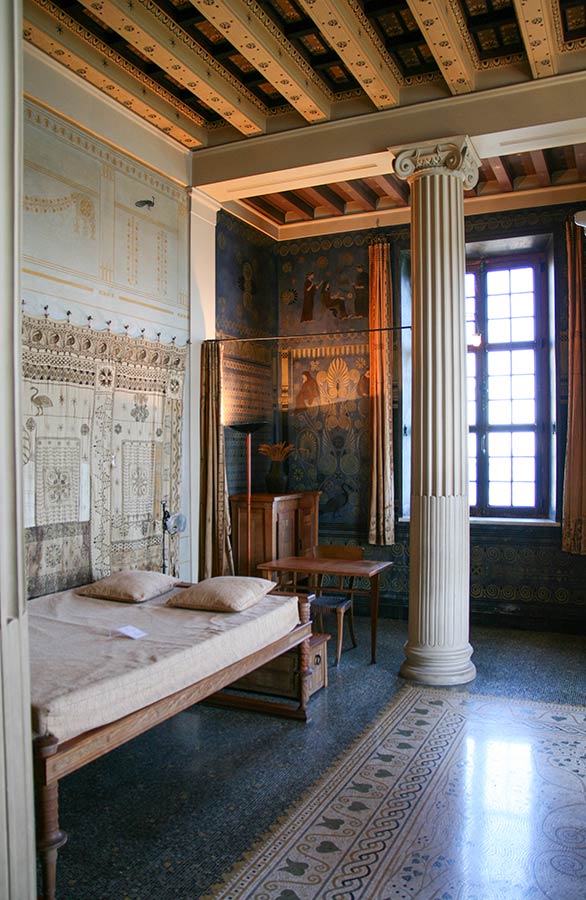
The villa boasts all the technological advances and comforts of its era: electric lighting, central heating, and bathrooms with hot water.

The outdoor spaces are equally impressive.
The garden, planted with olive trees, vines, pomegranates, myrtles, palm trees and papyrus offers an unparalleled views all the way to Italy.

Now managed by the Centre des Monuments Nationaux, Villa Kérylos continues to awe its visitors. A place of transmission, it hosts exhibitions and cultural events, extending the spirit of sharing Reinach envisioned.
As he wrote in 1908: “Hasn’t it often been necessary, since the great Renaissance, to seek a new injection of Hellenic serum to save our culture from mannerism or barbarism?”
Shop the Look



